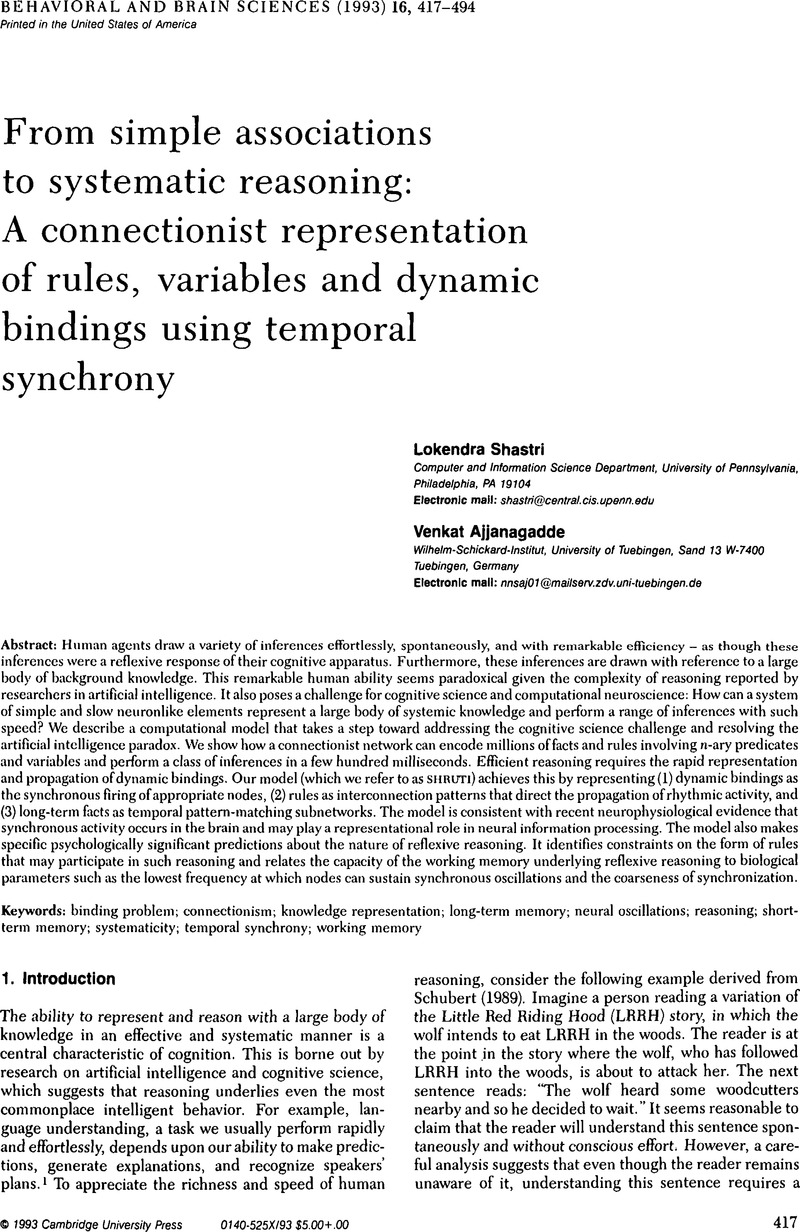Crossref Citations
This article has been cited by the following publications. This list is generated based on data provided by Crossref.
Barnden, John A.
1994.
Computational Architectures Integrating Neural And Symbolic Processes.
Vol. 292,
Issue. ,
p.
21.
Barnden, John A.
1995.
High-level reasoning, computational challenges for connectionism, and the Conposit solution.
Applied Intelligence,
Vol. 5,
Issue. 2,
p.
103.
Glassman, Robert B.
1999.
Hypothesized neural dynamics of working memory: several chunks might be marked simultaneously by harmonic frequencies within an octave band of brain waves.
Brain Research Bulletin,
Vol. 50,
Issue. 2,
p.
77.



